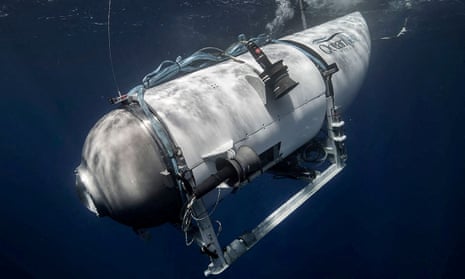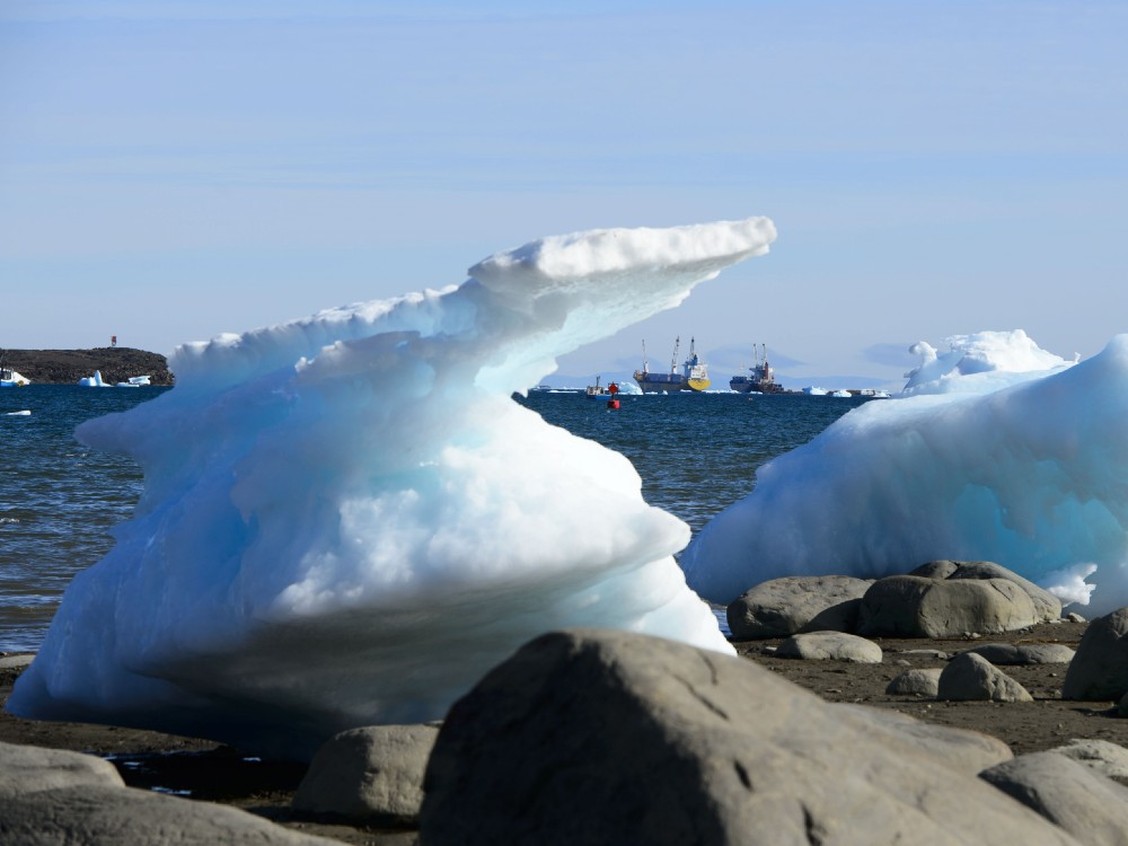"[We are] exploring and mobilizing all options to bring the crew back safely."
"Our entire focus is on the crew members in the submersible and their families."
"[We are] deeply thankful for the extensive assistance we have received from several government agencies and deep sea companies in our efforts to re-establish contact with the submersible."
OceanGate Expeditions
"[A catastrophic implosion could be heard for thousands of miles and could be recorded]".
"[An
implosion would likely trigger signals in military hydrophones, devices
used in the world’s oceans for recording or listening to underwater
sounds.]"
"To me it sounds like the sub’s pressure hull is intact, but it’s demobilized from power."
"One of the reasons I suspect the sub may not be able to surface after
dropping a release weight could be that it may be partially flooded …
If you have water in the pressure hull, it’s quite a large volume. The
drop weights usually aren’t that big, and that could be what’s keeping
it on the bottom."
"It also means that if the occupants are sitting in a half-flooded
pressure hull, that could also be catastrophic. They could become
hypothermic. I don’t know how well the CO2 scrubber systems would work
if they’re wet."
Ron Allum, deep-sea engineer and explorer
 |
| The Titan submersible operated by OceanGate Expeditions dives in an undated image. Photograph: Oceangate Expeditions/Reuters |
Is there irony being expressed by fortune that a submersible built 70 years after the catastrophic sinking of the world's largest passenger vessel on its maiden voyage holding well over two thousand people on board -- the object of both sadness and curiosity attracting the world's attention generation after generation -- would itself be in a deadly perilous situation of forlorn dimensions in a remote area of the Atlantic where it had submerged with five passengers who may now join the 1,500 who perished that fateful day of 15 April, 1912...?
The submarine was reported on Sunday as being overdue, about 700 kilometres south of St. John's Newfoundland. The U.S. Coast Guard out of Boston responded, along with the Canadian Coast Guard and the search effort remains ongoing, with hope fading as the days go by. It was known that the availability of oxygen on the research sub was sufficient to last four days. The estimate by experts is that by Thursday morning oxygen will have been exhausted.
The ship from which the submersible is launched is owned by the Labrador Mi'kmaq band operated by OceanGate Expeditions which takes explorers and paying passengers of the public to the Atlantic Ocean's depths at a cost of $250,000 each passenger. The submersible can seat up to five people. And the list of its passengers on this trip included a Pakistan businessman and his son, along with two others with scientific credentials and the steersman.
"A weather window has just opened up and we are going to attempt a dive tomorrow [Sunday, 4:00 am]."
We started steaming from St. John's, Newfoundland Canada yesterday and are planning to start dive operations around 4am tomorrow morning. Until then, we have a lot of preparations and briefings to do."
Hamish Harding, Chairman Action Aviation
 |
| The Titan submersible is seen launching from a platform in an undated photo. Photograph: OceanGate Expeditions/AFP/Getty Images |
Hamish Harding, 58-year-old British businessman, is known internationally as an adventurer--- he was involved in Blue Origin's fifth human space flight, holds the world record for the fastest circumnavigation of the Earth via the North and South Poles by an aircraft which took 46 hours, 40 minutes, and 22 seconds. Another world record he holds is for the longest time at the bottom of the Ocean in 2021 when he spent over four hours on the sea floor of Challenger Deep in a submergence vehicle, at a depth of 10,930 metres in the Mariana Trench.
The pilot of the Titan on this voyage is Paul-Henri Nargeolet, 73, considered the world's leading expert on the Titanic wreckage, director of underwater research for Experiential Media Group and RMS Titanic Inc. He has spent more time in dozens of submersible dives to the Titanic wreckage than any other explorer. He took part in the Five Deeps expedition in 2019, exploring the deepest parts of all five of Earth's oceans.
"If you are 11 metres or 11 km down, if something bad happens, the result is the same. When you're in very deep water, you're dead before you realize that something is happening, so it's just not a problem."
"You stand down four, five, six, seven-eight hours, which is the longest, and even then you don't really want to come back up."
"Sometimes I go to the end of the [sub] batteries and sometimes even more than to the end. Indeed, I've been told off for doing so several times. Then the resurfacing takes just as long, so one can be down between ten to 12 hours."
Paul-Henri Nargeolet
 |
| The Titan submersible, as seen in an undated handout photo issued by OceanGate Expeditions. Photograph: OceanGate Expeditions/PA |
St. John's, Newfoundland is the jumping off point each year for the 10-day OceanGate Titanic expedition. When six "mission specialists" are recruited to view the Titanic wreck and its debris field, covering 25 square nautical miles. The Titan is reported to be the size of a mini-van. The Titanic itself is at a 3,800 metre depth at the bottom of the Atlantic. Since its discovery in 1985, it has gradually succumbed to the effects of metal-consuming bacteria; predictions are the ship could dissolve in a matter of decades given huge holes in the hull as sections disintegrate.
Anyone on board the submersible must be at least 18 years of age and "be comfortable in dynamic environments where plans and timetables may change". They must be possessed of basic physical strength, balance, mobility and flexibility. The submersible's high-resolution cameras provides those on board with a live view of the wreck. The dives are projected with a view to serving science through its observations.
CBS journalist David Pogue had once boarded the submersible, remarking that he "couldn't help noticing how many pieces of this sub seemed improvised, with off-the-shelf componentism". A video game controller, he pointed out, was used to pilot the vehicle. This, balanced with preparations for the undersea trips, where mission specialists receive training in navigation, piloting, tracking and communications. Crews typically spend "three to five hours" exploring the Titanic wreckage while seated in the submersible.
The CEO of OceanGate, Stockton Rush, became the youngest jet transport-rated pilot in the world at 19 with his captain's rating at the United Airlines Jet Training Institute in 1981. He has a degree from Princeton University in aerospace engineering. Now in his early 60s, he worked with Boeing Co. on an early design of the Titan carbon-fibre sub, then with NASA. He originally looked to space for a career, then changed his target to exploring the world's oceans. He is now, with the four others, in his submersible.
 |
The OceanGate 22-foot carbon fiber and titanium vessel called the Titan is driven with a PlayStation remote control
|
Labels: Atlantic Ocean, Expedition in Peril, Newfoundland, OceanGate, Rescue Operation, St. John's, Titan Submersible, Titantic Wreck





























